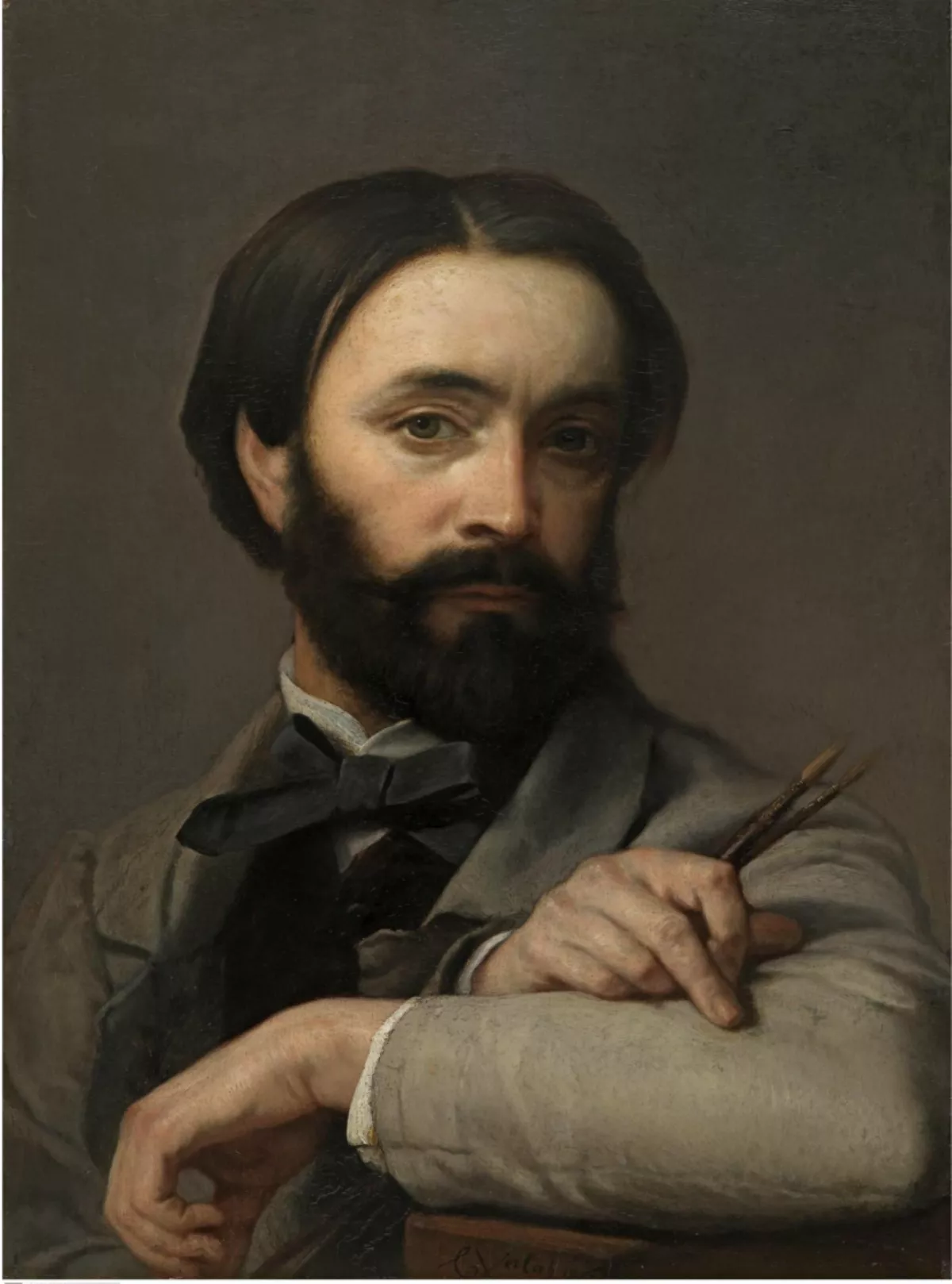 1.
1. Charles Verlat or Karel Verlat was a Belgian painter, watercolorist, engraver, art educator and director of the Antwerp Academy.

 1.
1. Charles Verlat or Karel Verlat was a Belgian painter, watercolorist, engraver, art educator and director of the Antwerp Academy.
Charles Verlat painted many subjects and was particularly known as an animalier and portrait painter.
Charles Verlat created Orientalist works, genre scenes, including a number of singeries, religious compositions and still lifes.
Charles Verlat was a professor of drawing and director of the Antwerp Academy when Vincent van Gogh spent a brief period as a student at the Academy in 1886.
Charles Verlat was born in Antwerp as the son of a manufacturer of soap, oil and soda.
Charles Verlat's mother arranged for the young Charles to get his first drawing classes from the Dutch sculptor Johannes Antonius van der Ven, who was then studying at the Antwerp Academy.
Charles Verlat left formal school education at the early age of fourteen and was accepted together with Godfried Guffens to take lessons at the private studio located in the Vleeshuis of Nicaise de Keyser.
Charles Verlat started participating in the salons of his time and in 1843 sent his first important picture, Pippin the Short Killing a Lion to the Antwerp triennial salon.
Charles Verlat gradually started to paint animal scenes as well as genre scenes.
Charles Verlat participated in the Prix de Rome of Belgium in 1847 but was not successful, possible as the result of his partial incapacitation due to a broken arm.
Charles Verlat left for Paris in 1850 and studied there first in the studio of the Dutch painter Ary Scheffer.
Charles Verlat gained commissions from religious and official institutions in Belgium including the commission from the Antwerp city government for the large historical composition Godefroid de Bouillon during the assault on Jerusalem.
Charles Verlat gradually came under the influence of the Realism of Gustave Courbet.
Charles Verlat took revenge by painting a monkey shaving itself while wiping its feet on the copy of the newspaper in which the criticism had been published.
Charles Verlat returned for a year to Antwerp to return the next year to work in his studio in Paris.
Charles Verlat painted religious subjects and his Pieta of 1866 was so successful that it earned him the distinction of being appointed a knight in the French Legion of Honour.
Charles Verlat was very appreciated by the Grand Duke and taught art classes to the daughters of the Grand Duke.
Charles Verlat became later the acting head of the Art School.
Charles Verlat then moved on to Jerusalem where he would reside for two years.
Charles Verlat traveled throughout Palestine and painted the people, animals and landscapes.
Charles Verlat seems to have been motivated by a desire to study the real life of the people who formed the subjects of his religious paintings.
Charles Verlat exhibited the paintings he had created in Palestine in various locations, including in Weimar, Antwerp, Brussels and London.
Charles Verlat had been called to Antwerp to take up the position of professor of painting at the Antwerp Academy which had become vacant with the death of Jozef Van Lerius.
Charles Verlat was offered a seat on the board of the Academy to replace Nicaise de Keyser upon his retirement.
When Nicaise de Keyser resigned in 1879, Charles Verlat decided to let his old teacher Joseph Geefs take up the role.
In 1881 Charles Verlat was made Commander in the Order of Leopold.
Charles Verlat executed this work with the assistance of his pupils.
Charles Verlat started to attend drawing classes after plaster models at the Antwerp Academy on 18 January 1886.
Charles Verlat quickly got into trouble with Verlat, the then director of the Academy and teacher of a painting class, because of his unconventional painting style.
Charles Verlat organised for van Gogh to attend the drawing classes after antique plaster models given by Eugene Siberdt.
Charles Verlat taught many other international pupils at the Academy including the illustrator Joseph Finnemore, Joseph Malachy Kavanagh and John Duncan.
Charles Verlat became involved in the reorganisation of art education in Antwerp and the establishment of the Hoger Instituut voor Schone Kunsten which was to take over some of the tasks of art education in Antwerp.
Charles Verlat tried to maintain a more important role for the Academy but was only partially successful.
Charles Verlat's health declined and in 1890 he had a stroke which partially paralysed him.
Charles Verlat was buried two days later on the Kielkerhof and two years later a bust created by his friend Jules Pecher was placed on the grave.
Charles Verlat was a versatile artist who practised painting, watercolor and etching.
Charles Verlat was initially influenced by the professors of the Antwerp Academy who were important proponents of the Belgian Romantic school and preached a return to the glorious Flemish Baroque style to treat important events in Belgium's history.
Charles Verlat was later influenced by other contemporary art movements: the German Idealists whom he knew through Ary Scheffer in Paris and the Realism of Gustave Courbet.
Charles Verlat regained his more colorful palette after his return to Antwerp.
Charles Verlat was able to render animals in a lively and realistic manner.
Charles Verlat created some original etchings in the early 1880s, including a self-portrait.
Charles Verlat worked directly on the plate without other preparation which gives these works a spontaneous feel.